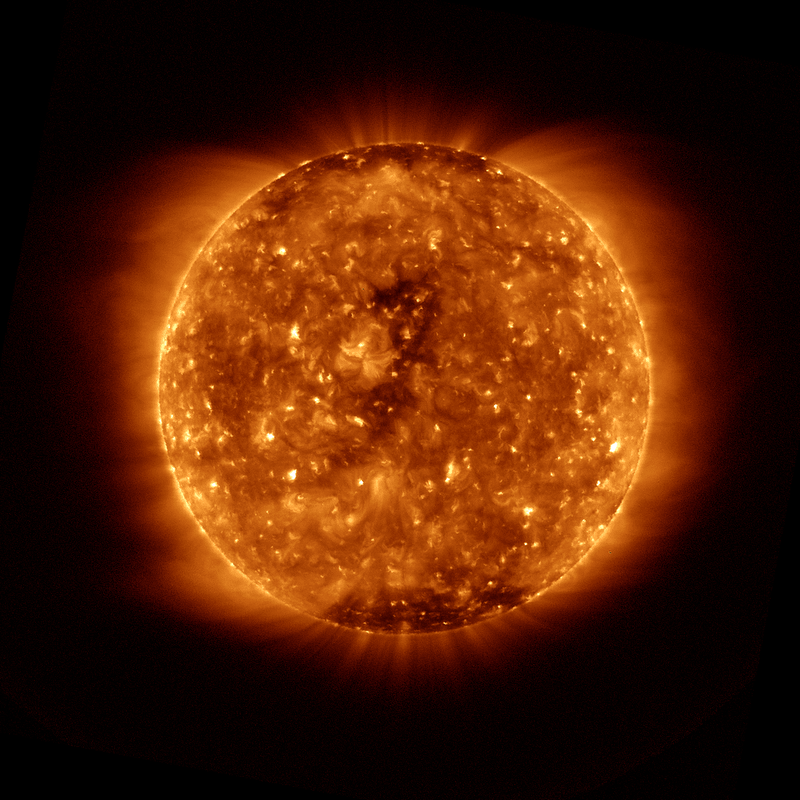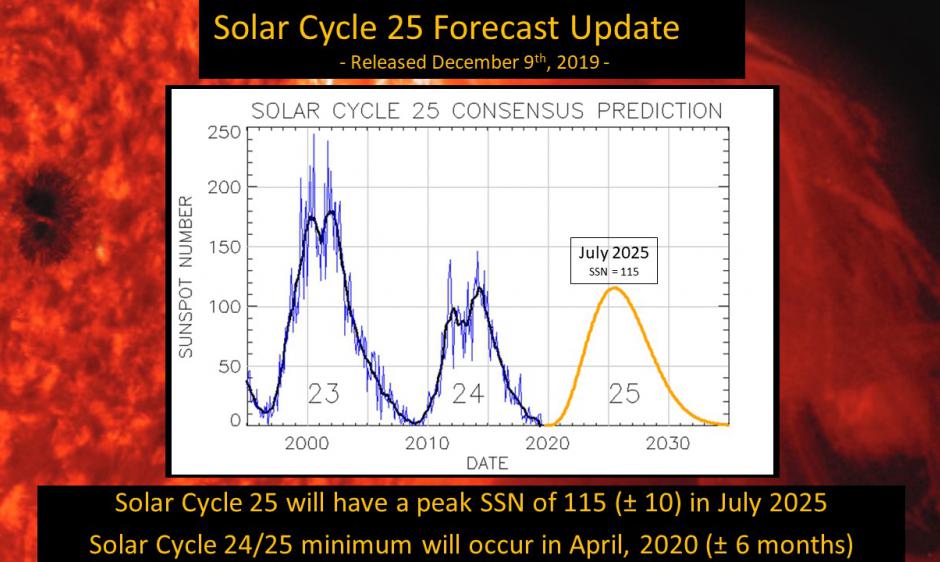|
September 17, 2020 Lead Article, Date; September 15, 2020 Website; www.noaa.gov Lead Author/Credit; Weather.gov Forward; Ray Langella, Credit: Solar minimum - the period when the sun is least active - as seen by the Solar Ultraviolet Imager aboard GOES-East on Dec. 15, 2019. We are now in Solar Cycle 25. Credit: NOAA. Please Treat me to a Cup of Coffee -$5, $10 or whatever you can do. This way I can keep sharing articles, data, information and science regarding Real, Sun Driven Climate Change! Thanks in advance! According to The National Oceanic and Atmospheric Administration (NOAA) and of course based on the latest analysis we are now in Solar Cycle 25. While this may not be big news to those sipping a Latte with some friends at Starbucks, it is to those who believe as do I in a Sun Driven Climate. Now that Solar Cycle 24 is history it's now time to turn our sights on Solar Cycle 25. However it is important to keep in mind that according to NOAA and NASA; "Solar Cycle 24 was average in length, at 11 years, and had the 4th-smallest intensity since regular record keeping began with Solar Cycle 1 in 1755. It was also the weakest cycle in 100 years. Solar maximum occurred in April 2014 with sunspots peaking at 114 for the solar cycle, well below average, which is 179" [1] So what do have to look forward to regarding Solar Cycle 25? Well, if you ask the "Solar Cycle 25 Prediction Panel, which is an International Groupd of experst and also co-chaired by NOAA and NASA" it is predicted that Solar Cycle 25 will pretty much be on par with Solar Cycle 24. In other words "the same strength as cycle 24. Solar maximum is expected in July 2025, with a peak of 115 sunspots." So, what exactly does this mean for us? I guess it depends on who you ask. The first thing you need to know is that there is still a possiblity that the Sun could continue it's downward trend in regards to it's intensity as we have seen during Solar Cycles 22, 23 and 24. It is also quite possible that the The Suns intensity may increase. However, current expectations are we will experience a similar and fairly weak Solar Cycle as with did with Solar Cycle 24. As of right now we are experiencing an interesting slow start to Solar Cycle 25. If a "rather weak solar maximum should occur between November 2024 and March 2026," [2] then beginning 2027 may begin another series of harsh winters. My assessment at this time is that we will continue to experience another Solar Cycle in which Sun Spot activity will decline or at least be way under average. Even if Solar Cycle 25 is for all intent and purposes a Carbon Copy of 24 that will be four successive Sun Spot Cycles which will part of downward trend in Solar Activity. As for now the Next couple of Winters in the Northern Hemisphere until maybe through 2022 will probably not be a lot of fun. The Good News is as we climb toward Solar Max between 2024 and 2026 the Northern Hemisphere should experience a few Mild Winters and give us a slight reprieve from harsh winters. Unfortunately, like I said earlier, when 2027 comes rolling around as we head towards Solar Minimum between Cycles 25 and 26, Northern Winters will likely once again begin to experience harsh winters as Solar Activity decreases. Below is the Solar Cycle Forecast Update from NOAA. As you can see both Solar Cycles could be very similar. However, there is one thing that is for sure. As of right now we are experiencing a slow start to Solar Cycle 25. If a "rather weak solar maximum should occur between November 2024 and March 2026," [2] then beginning 2027 may begin another series of harsh winters. My assessment at this time is that we will continue to experience another Solar Cycle in which Sun Spot activity will decline or at least be way under average. Even if Solar Cycle 25 is for all intent and purposes a Carbon Copy of 24 that will be four successive Sun Spot Cycles which will part of downward trend in Solar Activity. As for now the Next couple of Winters in the Northern Hemisphere until maybe through 2022 will probably not be a lot of fun. The Good News is as we climb toward Solar Max between 2024 and 2026 the Northern Hemisphere should experience a few Mild Winters and give us a slight reprieve from harsh winters. Unfortunately, like I said earlier, when 2027 comes rolling around as we head towards Solar Minimum between Cycles 25 and 26, Northern Winters will likely once again begin to experience harsh winters as Solar Activity decreases. Below is the Solar Cycle Forecast Update from NOAA. As you can see both Solar Cycles could be very similar. ThSolar Cycle 25 Forecast Update
published: Monday, December 09, 2019 22:30 UTC (source, NOAA) "The NOAA/NASA co-chaired, international panel to forecast Solar Cycle 25 released their latest forecast for Solar Cycle 25. The forecast consensus: a peak in July, 2025 (+/- 8 months), with a smoothed sunspot number (SSN) of 115. The panel agreed that Cycle 25 will be average in intensity and similar to Cycle 24." 1. NOAA: (September 15, 2020) Hello Solar Cycle 25: Analysis determines we are in Cycle 25 2. Phys.org (September 16, 2020) Solar Cycle 25 Has Begun, Suggested Readings; Space Weather Archive; (August 04, 2020) Solar Cycle 25 is coming to Life World Meteorological Organization (December 04, 2019, Updated December 19, 2020) The Sun Comments are closed.
|
Weather, 11 March The Sun Drives Climate
This Section of the Web Site will deal with all things related to our Solar Driven Climate. Yes, that Big, Beautiful Light Bulb in the Sky that gives us warmth! However, the Sun is not always so kind and sometimes takes a bit of a break in the form of a Grand Solar Minimum and Possibly a Super Grand Solar Minimum. You may also call it Solar Hibernation. No matter what you call it, mankind does not do well in the cold. In fact, in the very near future we may be begging for some Man Made Global Warming! With that in mind and with all the talk about warming are you prepared for cooling? By The Way! We are not just talking about a bad winter or two! Archives
April 2022
Categories |
|
Welcome To www.RapidCooling.net
|
Site powered by Weebly. Managed by Bluehost




 RSS Feed
RSS Feed
